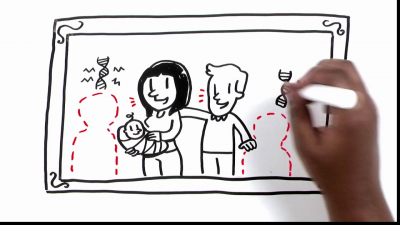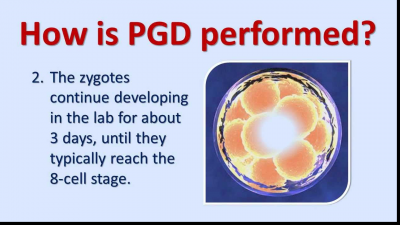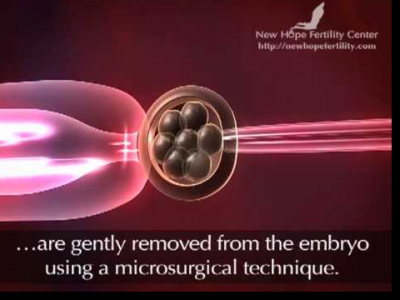Is it possible to choose whether our baby is a boy or a girl?
The main concern of a woman or couple trying to have a child is whether they can get pregnant, either naturally or with the help of assisted reproduction .
Once the embryo has implanted in the womb and pregnancy is achieved, other doubts and concerns begin to arise in future parents, such as the sex the baby will have.
The embryologist Rocio Diaz tells us how is the determination of male or female in fertilization, as well as the possibilities that exist in the selection to be a boy or a girl.
Below you have an index with all the points that we will discuss in this article.
Index- 1. What sex will my future child have?
- 2. Is it possible to choose the sex of the baby?
- 2.1. Selection of post-fertilization sex
- 2.2. Preferential sex selection
- 3. Legal issues of sex selection
- 4. Authors and collaborators
What sex will my future child have?
Fertilization of the embryo is the moment when the paternal sperm interacts with the maternal egg and both mix their genetic material.
The sex of the future baby will depend on the combination of the sex chromosomes that both gametes have contributed:
- The woman's ovules always have the X chromosome.
- Man's sperm can have the X chromosome or the Y chromosome.
In this way, the sex of the embryo is determined by the genetic load provided by the sperm, that is, the birth of a son or daughter will always depend on the man.
The baby will be a girl with a pair of XX sex chromosomes if the sperm contained the X chromosome or, on the contrary, it will be a child with XY endowment if the sperm that fertilizes the egg had a Y chromosome.
The semen of the male is formed by millions of sperm X and Y swimming in the seminal fluid. The arrival of one type or another of sperm to fertilize the ovum and, therefore, sexual determination, are completely random.
Is it possible to choose the sex of the baby?
The fact of choosing the sperm with the desired chromosome to have a boy or a girl is possible thanks to genetic techniques and the advance of assisted reproduction in recent years.
Next, we will describe some techniques for the selection of sex:

Selection of post-fertilization sex
It consists in differentiating embryos in male or female sex after having obtained them in a process of in vitro fertilization (IVF). This is possible thanks to the technique known as preimplantation genetic diagnosis (DPG).
When embryos in culture have a stage of 8 cells or more, they are biopsied to extract 1 or 2 cells and analyze their genetic content.
In addition to being able to identify possible chromosomal alterations, it is possible to find the XX or XY sex chromosomes of the embryos with genetic techniques such as PCR (polymerase chain reaction) or FISH (in situ hybridization).
The embryos of the desired sex will be chosen to transfer to the uterus of the mother and be able to achieve a pregnancy.
Regarding the reliability of sex selection with PGD, the effectiveness of this method is 100%.


Legal issues of sex selection
As we have seen, it is technically possible to choose the male or female sex of the baby through an assisted reproduction treatment. However, in Spain it is not possible due to ethical and legal issues.
Law 14/2006 on techniques of assisted human reproduction stipulates in its article 13 section 2 section C the following:
The therapeutic techniques in the pre-embryo will be authorized provided that the non-pathological hereditary characters are not modified or the selection of the individuals or the race is sought.
In short, it is only possible to choose the sex of the future child if this helps to avoid the transmission of hereditary genetic diseases.
We make a great editorial effort. Sharing this article helps us and motivates us to continue our work.
35
Comments
Post a Comment